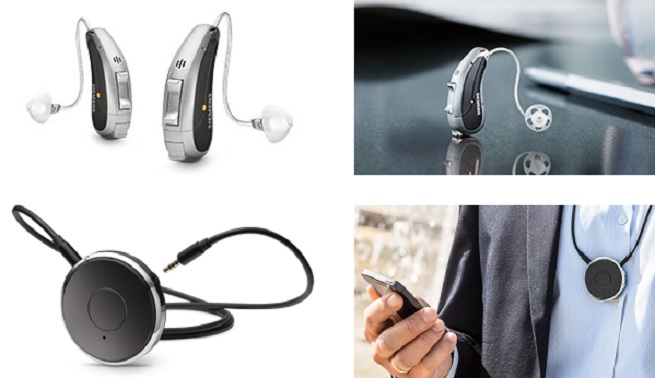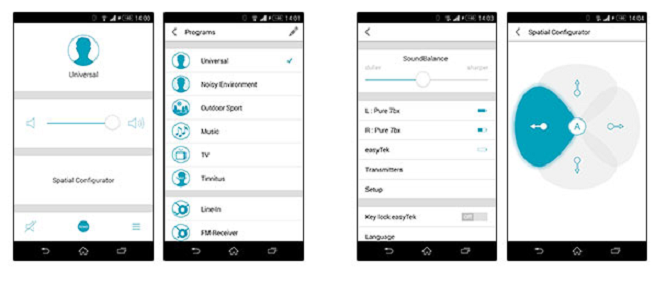Siemens has introduced the smart hearing aid, and it’s pretty nifty.
Smart hearing aids are part of the larger trend toward the Internet of Things, or adding connectivity and computing smarts to everyday objects. It makes them more useful and adds functions that you couldn’t get any other way. The Siemens EasyTek smart hearing aid system is one of many gadgets being shown off at the 2015 International CES, the big tech trade show this week in Las Vegas.
The EasyTek smart hearing aid system connects each hearing-aid earbud via Bluetooth to an EasyTek disc that you wear around your neck. You can use that disc to control the volume in the device, or turn the hearing aid on or off. The device also connects via Bluetooth to the Siemens EasyTek app on iOS or Android devices. You can use that app to control the parameters of the hearing aid.
I’m not particularly hard of hearing, but I’ve tried them out. The most noticeable place where they stand out is in a busy restaurant or cafe. I found that it amplified the voice of Siemens representative Alexandra Dunn, even though there was a lot of chatter around us. That’s because the device has noise cancellation technology that removes noise and amplifies the voice of the person who is directly in front of you.
The smart hearing aid adapts to adjust volume levels and noise cancellation if you are driving a car, playing golf in the wind, or listening to a music concert. Siemens says that two independent clinical studies have shown that the company’s hearing aids with binaural processing provide better than normal hearing capabilities in demanding environments. The difference in sound quality was dramatic, and I found that even I could benefit from wearing these smart hearing aids because they filtered out so much of what I didn’t want to hear.
On top of the automated assistance, you can also control how the hearing aid works. The mobile app has a cool 3D spatial configurator that you can use to focus the hearing aid earbuds in a certain direction. You can point the zone of hearing behind you, and you’ll hear people talking behind you. You can point it to the right, and you’ll hear people talking to you on the right. Or you can focus the configurator directly in front of you to hear that person the loudest.
The hearing aid earbuds are small and hang over your ear. The Receiver-in-Canal hearing earbud has a wire that goes directly into your ear. A lot of the smarts is actually in the disc that hangs around the neck. There’s a built-in microphone, a multifunction button, a port for audio devices, a volume up/down button, a micro-USB slot, and a reset button. If you want to turn off the hearing aid, you can override the manual controls on the earbuds and just hold down the on-off button on the disc. A green indicator light fades to tell you the device is powering down.
“It’s designed to be hands-free,” Dunn said. “It’s hard to explain what these hearing aids do until you try it.”
The disc allows you to control the wearable tech through your hands, without looking at the hearing instruments themselves. The disc also communicates to your smartphone, and you can control the hearing instruments in your ears without having to take them off your ears. You can use the app to adjust the bass and treble.
It took a while to pair the EasyTek with my iPhone 5S. On the other hand, that’s par for the course with that phone and Bluetooth devices. Once it was paired, it worked fine.
VentureBeat's mission is to be a digital town square for technical decision-makers to gain knowledge about transformative enterprise technology and transact. Learn More



